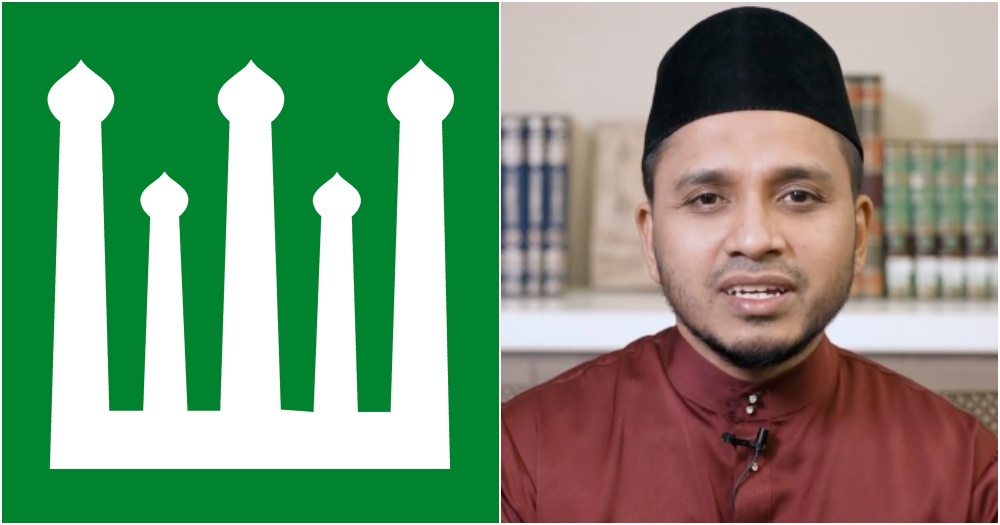Follow us on Telegram for the latest updates: https://t.me/mothershipsg
On Sunday, May 1 evening, Mufti of Singapore, Nazirudin Mohd Nasir, and the Islamic Religious Council of Singapore (MUIS) announced that Singapore will celebrate the first day of Hari Raya Aidilfitri on Tuesday, May 3.
Following the announcement, a number of Muslims in the country expressed their shock and confusion.
Some also questioned the religious leaders' decision, which in turn sparked heated debates within the community.
The unease stemmed from neighbouring countries — Malaysia, Indonesia, and Brunei— having announced that they will celebrate the first day of Hari Raya on Monday, May 2, a full 24 hours earlier.
Many within the Muslim community and some outside of the community wondered why Singapore is celebrating Hari Raya later, considering that all the countries in this region share the same, if not similar, time zones.
A few hours after the Hari Raya announcement was released, MUIS issued a statement to provide a thorough explanation and clarification on this matter.
Explained by MUIS
The crescent moon must be sighted
The statement, which was signed at the end by Mufti Nazirudin, stated at the start:
"The determination for the beginning and end of Ramadan follows the guidance of the Prophet Muhammad p.b.u.h. (peace be upon him) in a few narrations, among them:
Do not fast until you have sighted the crescent moon, do not end your fast (celebrate Eid) until you have seen it (the Syawal crescent moon). If it is obscured from you, then regard the month of Ramadan as 30 days."
Essentially, a crescent moon, which traditionally marks the start of a new month in the Islamic calendar, must be spotted in the sky to determine the end of the month of Ramadan, and the start of the Hari Raya month.
If the crescent moon is not visible, Muslims in the country must then ensure that they have fasted for a total of 30 days since the start of Ramadan, before they can welcome Hari Raya.
Determining that crescent moon is visible
MUIS' statement then explained:
"Based on the guidance of the Prophet p.b.u.h., scholars use two primary criteria, hisab (calculation based on the science of astronomy) and rukyah (the sighting of the moon) to determine whether the crescent moon is visible."
In Singapore, MUIS said it is "generally extremely difficult for the crescent moon to be visible because of its climatic conditions, which is often cloudy".
Thus, Singapore uses the criteria commonly agreed by the MABIMS countries (Brunei, Indonesia, Malaysia and Singapore) to determine the sighting of the crescent moon.
This methodology, known as imkan ar-rukya, considers two parameters during sunset on the 29th day of the month:
- The elevation of the crescent moon (which must exceed 3 degrees), and
- the degree of elongation of the sun and the moon (which must exceed 6.4 degrees).
MUIS said despite following these criteria, the crescent moon was still not visible in Singapore at sunset on Sunday, May 1, the 29th day of Ramadan.
Crescent moon was not seen in Singapore
Nearing sunset on Sunday, May 1, the Office of the Mufti uploaded a video that showed Mufti Nazirudin looking through a telescope to find the crescent moon.
MUIS' statement explained:
"For confirmation, the Office of the Mufti together with experts in the science of falak attempted to conduct a physical sighting of the crescent moon, which was unsuccessful (i.e. the new moon was not visible). During the sighting it was also clear that the western horizon was overcast with clouds."
MUIS added that authorities in the other MABIMS countries "reported that the crescent moon was visible in their sightings at only certain sites in their own territories".
"Although the results differed, all MABIMS countries adopted the method of determination which was based on the principles and guidance of the Prophet p.b.u.h, and their individual results are valid in their respective contexts, and everyone adheres to the principle that Ramadan in each country did not exceed 30 days."
This has happened before a couple of times
MUIS also pointed out that differences in the start of the Islamic calendar have occurred very frequently in the past, as recently as 2014, 2015, 2016, 2017 and 2021, and "may well occur again in future".
This is why many countries in the world, including Muslim-majority countries, do not celebrate Ramadan and Hari Raya Aidilfitri on the same dates.
"Indeed, the crescent moon has also not been sighted in a few other countries, and as a consequence, they will be celebrating Aidilfitri on Tuesday 3 May, like Singapore," MUIS said.
It added:
"For as long as we hold true to the principles of our faith and the guidance of the Prophet Muhammad p.b.u.h, s.a.w., as mentioned above, differences in the determination of the Islamic calendar is something which is neither unexpected nor alarming.
In closing, for the Singapore Muslim community, Ramadan in 2022 will last for 30 days, and Hari Raya Aidilfitri falls on Tuesday 3 May 2022. Thus, the community should continue to fast including on Monday 2 May 2022, to complete 30 days of the month of Ramadan."
Top images via MUIS' Instagram & Facebook pages.
If you like what you read, follow us on Facebook, Instagram, Twitter and Telegram to get the latest updates.
